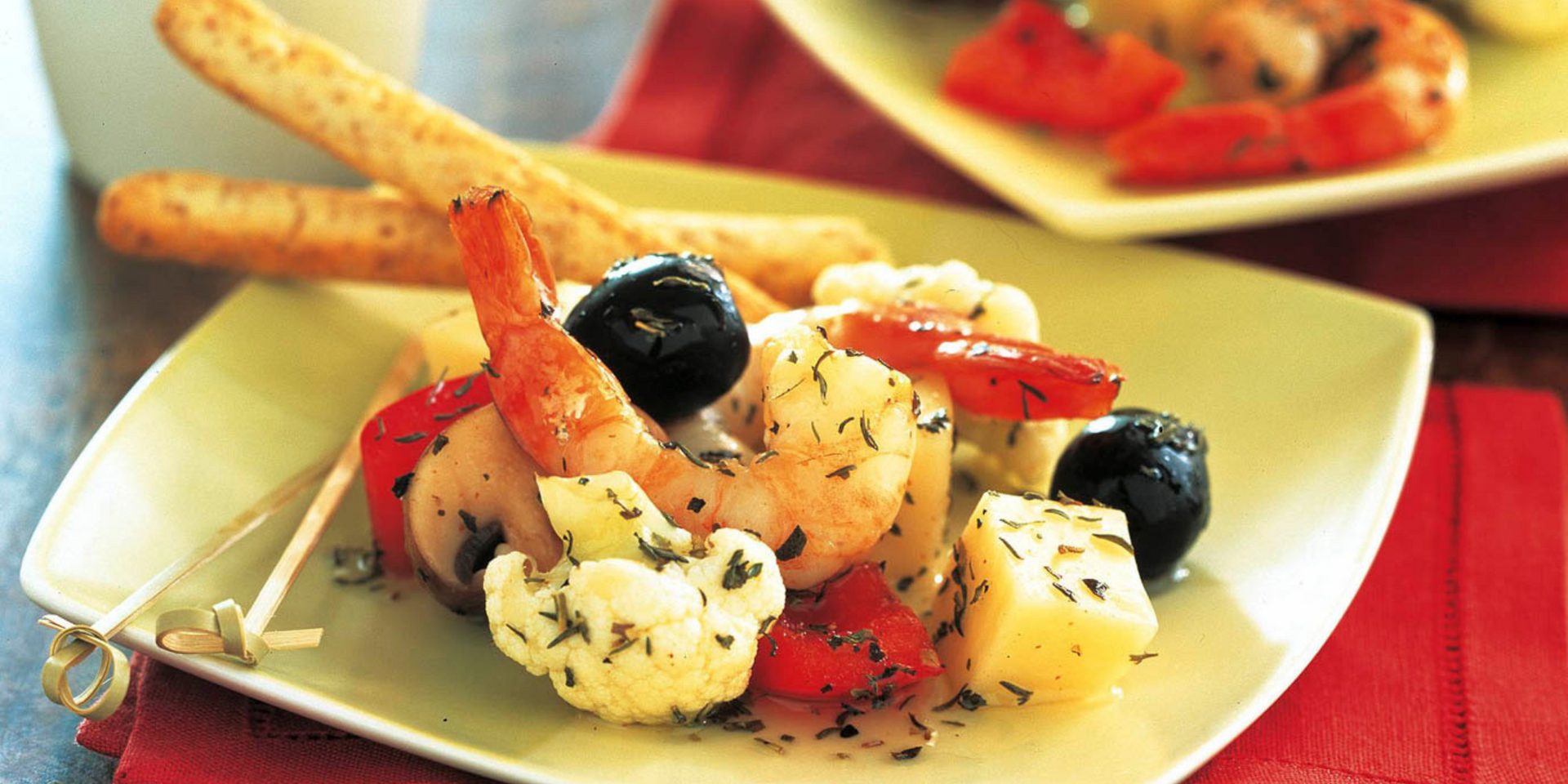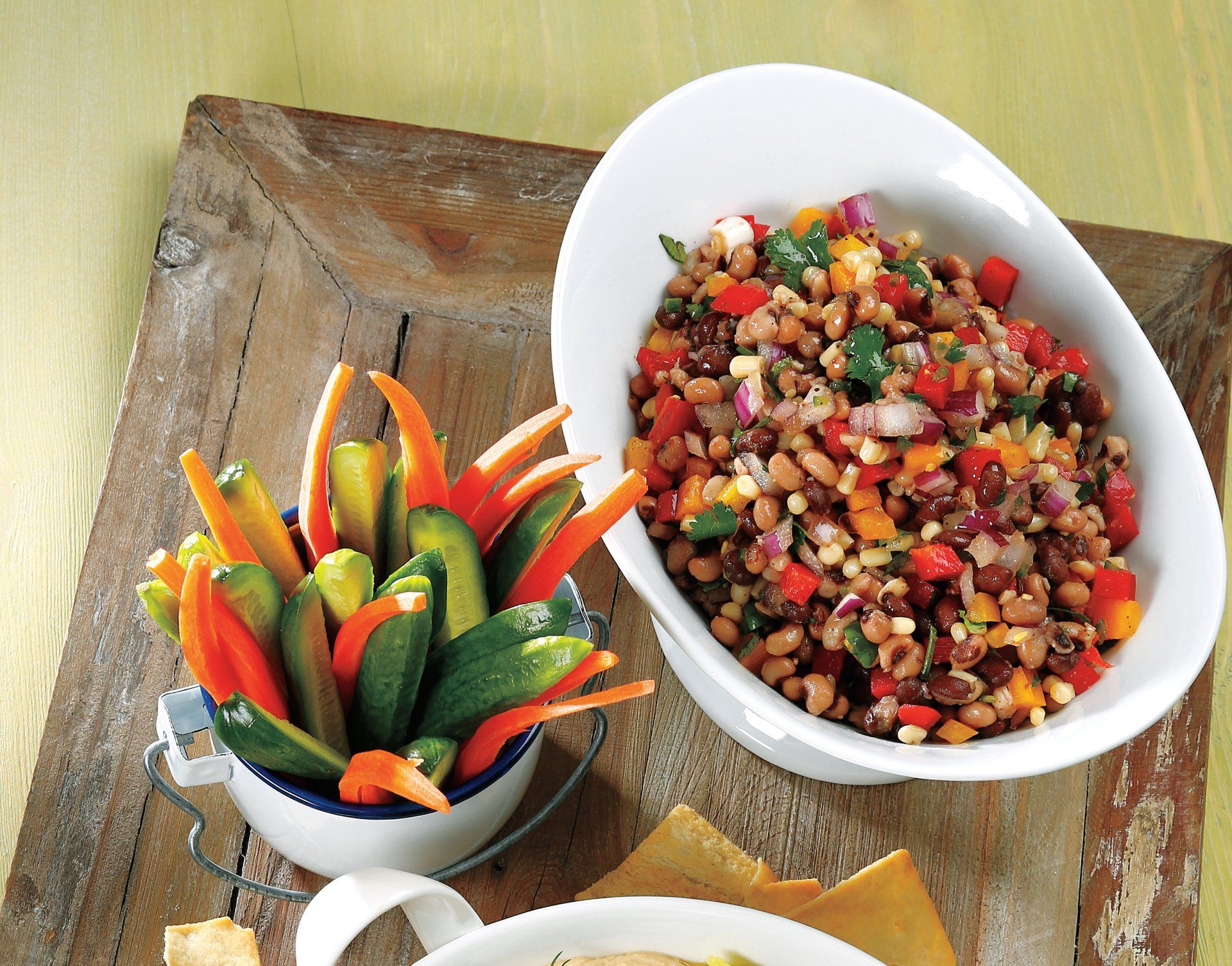Picnic Starters, Sides and Food Safety Tips
Summer means picnics and if you’re planning to head out to the lake or park, keep in mind that some foods travel better than others. Salads, deviled eggs, cheeses, fresh fruits, veggies and dips make great starters and sides since they are easy to prep, pack, transport and serve.
Super Starters


Scrumptious Sides
This salad will quickly become a picnic favorite! It’s super easy to make, and a bottle of Greek dressing makes it even easier.

Caesar Potato Salad
Fattoush Salad
It’s easy to get stuck in a rut with summer salads. Break free with this recipe that combines flavors from two distinctly different salads to create one uniquely delicious salad!
Looking for something besides traditional summer picnic salads? How about this globally inspired one! Fresh and colorful, it’s believed to have originated in Northern Lebanon when Lebanese farmers had leftover scraps of pita bread that they would add to a salad with veggies and then toss with olive oil.
Watermelon Panzanella Salad
This summer salad bursts with flavor with the addition of basil, and its undertones of mint, anise and pepper, and mint, with its sweet, refreshing and cooling taste profile.
Tuscan-Style White Bean Salad with Shrimp and Lentils
A delicious combo of flavors, colors and textures make this a perfect summer salad!
Important Food Safety Information:
Don’t let the fun be “spoiled” by foodborne illness. Protect yourself, your family and friends by following these simple food safety guidelines:
- Bring soap and water to your picnic or campsite. If water isn’t available for handwashing, then have disposable wipes or hand cleanser
- Be sure to wash hands before and after handling food
- Take only the amount of food you think you’ll use
- Pack foods in reverse-use order (pack foods first that you are likely to use last)
- Fill the cooler to capacity so it maintains its cold temperature longer than if it’s only partially filled
- Pack plenty of extra ice, freezer packs and/or frozen water bottles to ensure a constant cold temperature - cold food should be stored at 40 degrees or below to prevent bacterial growth
- Securely wrap raw meat, poultry and seafood and keep separate from cooked foods, or foods meant to be eaten raw (like fruits and vegetables)
- Rinse fresh fruits and vegetables before leaving home and packing in the cooler, including those with a skins or rinds that aren't eaten
- Bring a food thermometer to use if grilling to see if the meat and poultry have reached a safe internal temperature
- Store drinks and food in separate coolers since the beverage cooler will be opened frequently while the food cooler will stay cool
- Check out some of these refreshing beverages that can easily be packed and are perfect for picnic sipping!
- Transport cooler in the air-conditioned car rather than the hot trunk, and keep it out of the direct sun. Cover with a blanket or tarp at the picnic or campsite
- Return perishable foods to the cooler within 2 hours of eating, and 1 hour if temperatures are 90 degrees or higher
- Toss out any remaining perishable foods if there isn’t enough ice in the cooler or if gel packs are no longer frozen
- Never taste foods you think might be unsafe - most food poisoning bacteria are tasteless, colorless, and odorless - when in doubt, throw it out!


